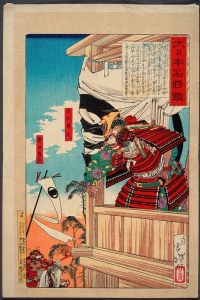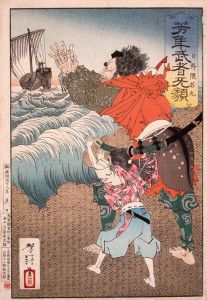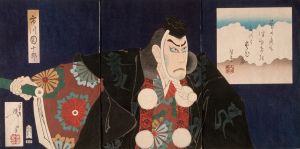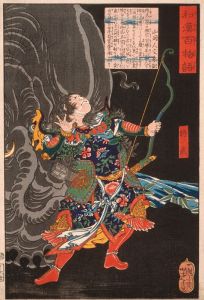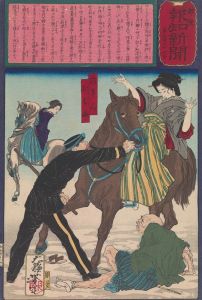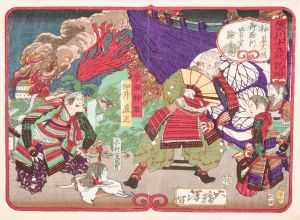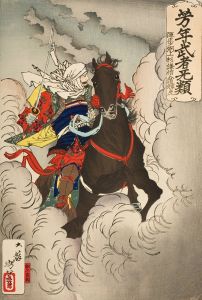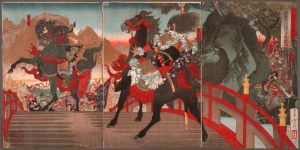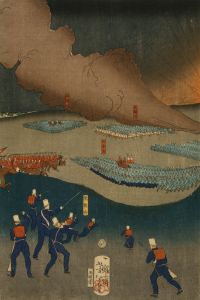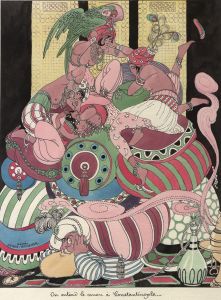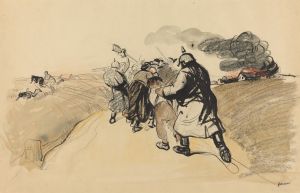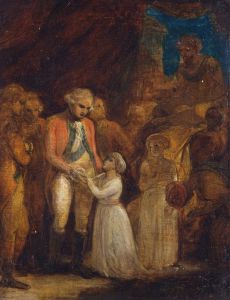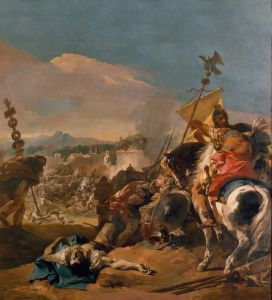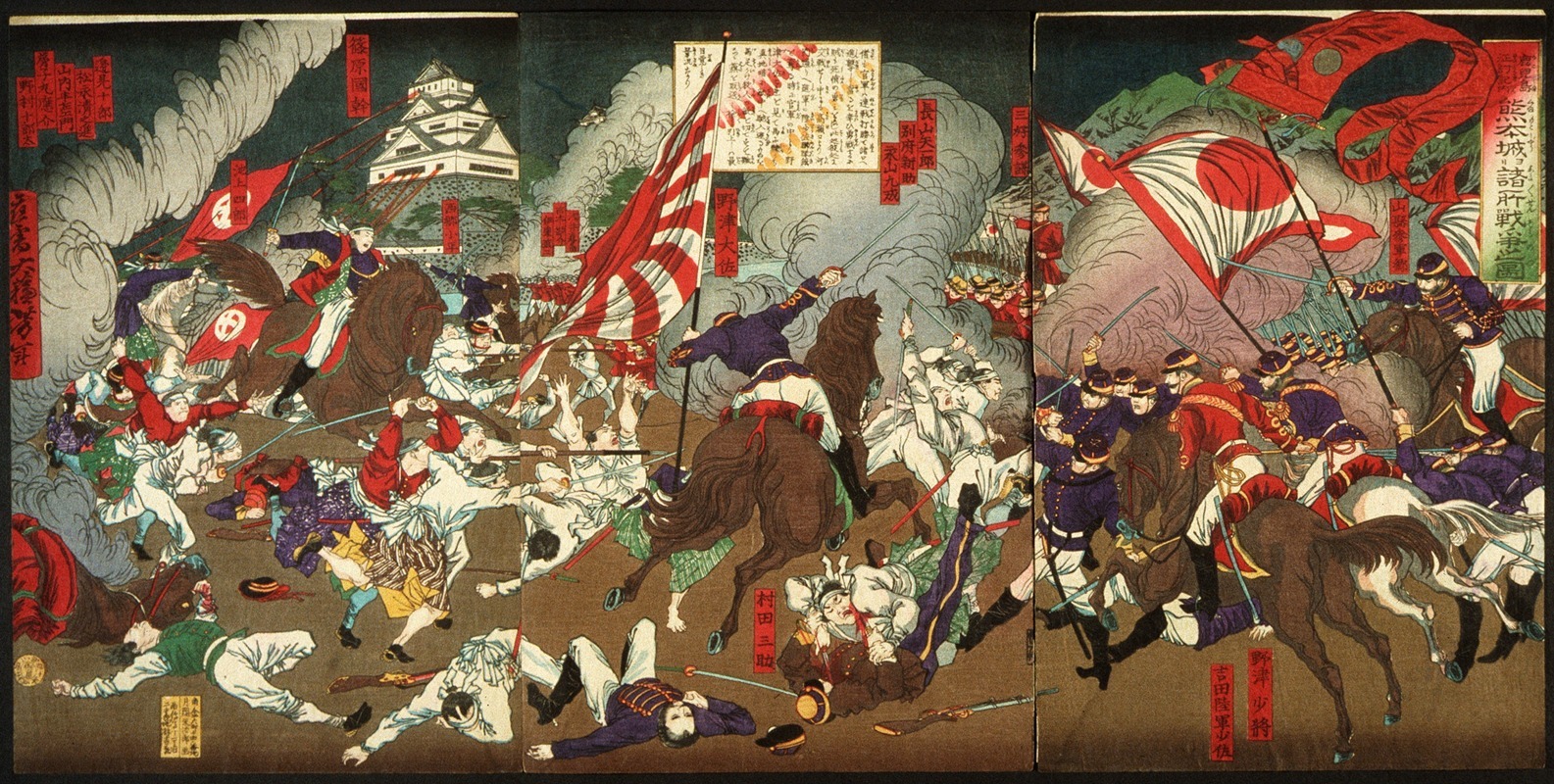
A Chronicle of the Subjugation of Kagoshima; Battle around Kumamoto Castle
A hand-painted replica of Tsukioka Yoshitoshi’s masterpiece A Chronicle of the Subjugation of Kagoshima; Battle around Kumamoto Castle, meticulously crafted by professional artists to capture the true essence of the original. Each piece is created with museum-quality canvas and rare mineral pigments, carefully painted by experienced artists with delicate brushstrokes and rich, layered colors to perfectly recreate the texture of the original artwork. Unlike machine-printed reproductions, this hand-painted version brings the painting to life, infused with the artist’s emotions and skill in every stroke. Whether for personal collection or home decoration, it instantly elevates the artistic atmosphere of any space.
Tsukioka Yoshitoshi, a prominent Japanese ukiyo-e artist of the late Edo and early Meiji periods, is renowned for his innovative and dramatic woodblock prints. One of his notable works is "A Chronicle of the Subjugation of Kagoshima; Battle around Kumamoto Castle." This artwork is part of Yoshitoshi's broader exploration of historical and contemporary events through the medium of ukiyo-e, which traditionally depicted scenes from history, folklore, kabuki theater, and the pleasure districts of Japan.
The artwork captures a significant historical event during the Satsuma Rebellion, which took place in 1877. This rebellion was a revolt of disaffected samurai against the new imperial government of the Meiji era, which had implemented sweeping reforms that effectively dismantled the traditional samurai class. The rebellion was led by Saigō Takamori, a former samurai and influential figure who had initially supported the Meiji Restoration but became disillusioned with the government's policies.
The Battle of Kumamoto Castle was one of the pivotal conflicts during the Satsuma Rebellion. Kumamoto Castle, located in Kyushu, was a strategic stronghold for the imperial forces. The siege began in February 1877 when Saigō's forces attempted to capture the castle. Despite being heavily outnumbered, the castle's defenders, led by General Tani Tateki, managed to hold out for several weeks. The siege was marked by fierce fighting and significant casualties on both sides.
Yoshitoshi's depiction of the battle is characterized by his dynamic composition and attention to detail, capturing the intensity and chaos of the conflict. His use of vivid colors and dramatic contrasts highlights the emotional and physical turmoil experienced by the combatants. The artwork not only serves as a historical record but also reflects Yoshitoshi's artistic style, which often combined traditional ukiyo-e techniques with a modern sensibility.
Yoshitoshi was known for his ability to convey complex narratives and emotions through his prints, and "A Chronicle of the Subjugation of Kagoshima; Battle around Kumamoto Castle" is no exception. The piece illustrates the tension between the old and new Japan, a recurring theme in Yoshitoshi's work as the country underwent rapid modernization during the Meiji period. His portrayal of the samurai, a class facing obsolescence, is both respectful and poignant, capturing the dignity and tragedy of their struggle.
The Satsuma Rebellion ultimately ended in defeat for Saigō Takamori and his followers, marking the end of the samurai's influence in Japanese politics. However, the rebellion and its key battles, such as the one at Kumamoto Castle, left a lasting impact on Japanese society and culture. Yoshitoshi's artwork serves as a visual testament to this transformative period in Japan's history.
In summary, "A Chronicle of the Subjugation of Kagoshima; Battle around Kumamoto Castle" by Tsukioka Yoshitoshi is a significant work that captures a crucial moment in Japanese history. Through his masterful use of the ukiyo-e form, Yoshitoshi provides insight into the cultural and historical shifts of the Meiji era, offering a poignant reflection on the end of the samurai era and the birth of modern Japan.





